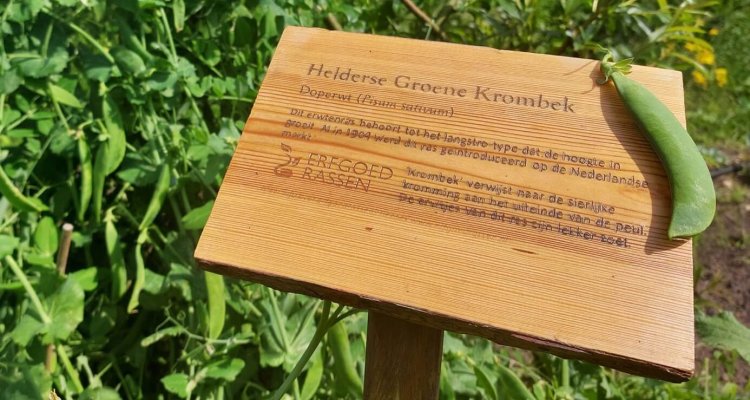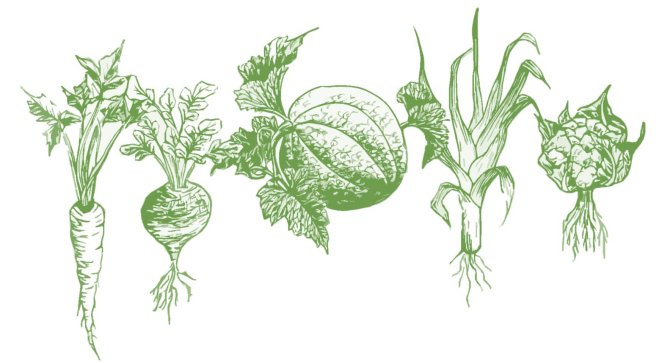
News
Wanted: seeds of Dikke Leidsche Winter and other 'lost' heritage varieties
A century ago, there were many more varieties in Dutch agricultural and horticultural sectors than there are today. The Centre for Genetic Resources, the Netherlands (CGN) at Wageningen University & Research is trying to rediscover and preserve ‘lost’ heritage varieties. Through a public action, the CGN hopes to add the last dozens of varieties missing from the list - five of which are ‘most wanted’ - to the collection. “Perhaps someone somewhere still has some seeds of old vegetable varieties in the attic."
Heritage varieties are varieties of crops that were developed and used until about the 1950s, says Robbert van Treuren, researcher on crop genetic resources. "Due to the expansion in agriculture, these varieties have been discarded due to poor yields or limited nutritional value, for example, and have thus fallen into oblivion. But these varieties are part of our biocultural heritage and may possess traits that are useful in today's breeding. Our list includes 350 heritage varieties. We share the stories thereof on our website. The CGN has seed samples of most heritage varieties. These are also available. But material from about 50 varieties is missing. Including the 5 most wanted."
5 most wanted heritage varieties
- Lange Holkruin: This parsnip variety has a large, fleshy white root with a sunken crown. Also known in the Netherlands by the name ‘Utrechtsche Platkop’.
- Wassenaar Selection: Yellow-fleshed cabbage turnip with purple or bronze coloured head and a thin stem. Has a round to oval shape.
- Kennemerland: Grown under flat glass, this Cantaloupe melon was created from a cross with Karbonkel.
- Dikke Leidsche Winter: The hardiest leek from the last century, featuring blue-green and broad leaves with late maturity.
- Delftsche Groene Kortpoot: This small cauliflower can be harvested early. The cabbage is bright yellow in colour, growing on a short stalk.

The most wanted varieties
The list of the 5 most wanted was compiled by researcher Lana de Bruijn. She explains why she wants to highlight these particular 5 varieties. "We would obviously prefer to recover all the lost varieties, but because of their names and place of origin, the most wanted ones capture our imagination the most. I mainly retrieved the information about these varieties from a list compiled by former CGN members, the Orange List. This list includes all varieties grown in the Netherlands between 1850 and 1950. It describes the characteristics of each variety, the region where they were grown and the year or period when they were last seen in the Netherlands. We hope that seeds of the varieties still missing from our collection are still around somewhere."
Importance of biocultural heritage
According to De Bruijn, retrieving and preserving old varieties is important for several reasons. "A heritage variety says something about our history, just like the paintings of Van Gogh and Rembrandt. For example, it provides information about where it was grown, such as what local people enjoyed eating and under what climatic and soil conditions a variety could grow. Take the oat variety ‘Evene’, for example, which we know was grown on very poor soil. And the wheat variety ‘Zeeuwse tarwe’, which did very well in inclement climates. Such traits can, in turn, be useful for breeding more resilient varieties of crops. Apart from their cultural-historical value, heritage varieties therefore also have social value."
Through a large-scale public action, the researchers are trying to find the missing varieties. De Bruijn: “Perhaps someone somewhere still has a few tubes of seeds in the attic that their grandmother once gave them. Or a hobby grower recognises the described features of a crop growing in his kitchen garden. And sometimes, a variety grows wild and is then discovered, as happened with the heritage rye variety, Veluws Kruiprogge." Van Treuren adds: “Or a variety may be found abroad. Perhaps because seeds have been taken when people emigrated, or because some varieties have been grown in several countries, such as the Passe-Partout lettuce variety."
Stories wanted too
Anyone who comes across one or more of the most wanted or other missing varieties can contact the CGN, says De Bruijn. "People can send seeds to us. We will then check whether the quality of the seed is good enough to germinate and grow the variety. Then we will check if it is indeed the variety we were looking for. In case of confirmed identity, we will propagate the seeds and make them available to the public. Seeds of heritage varieties can be ordered through our website or from seed traders." Besides seeds, the CGN is also looking for stories. Van Treuren: “Maybe someone still knows where the seeds came from, or perhaps a recipe using the variety is still present in a drawer somewhere."
Admiring heritage breeds with your own eyes
This year, a dozen heritage varieties are grown in the historic 'Ommuurde Tuin' kitchen garden in Renkum. De Bruijn: “This will literally give people a glimpse into our biocultural heritage and make our collection of heritage varieties a bit more tangible. For example, visitors can see the rather unknown ‘Haverwortel’ growing and flax from which linen is made. It would be nice if through this garden we’re able to reach people who still have seeds of missing varieties, so that we can expand the heritage variety collection."
Centre for Genetic Resources, the Netherlands
The CGN has a collection of nearly 24,000 seed samples of more than 30 different agricultural and horticultural crops. These are kept in vacuum-packed bags in freezers at -20⁰C, with the aim of preserving them for ever. These seed samples are made available to professionals in breeding, research and education. Seed samples of heritage varieties are also accessible to the general public as a special collection. Apart from plants, the CGN also manages a gene bank for animals, trees and aquaculture.